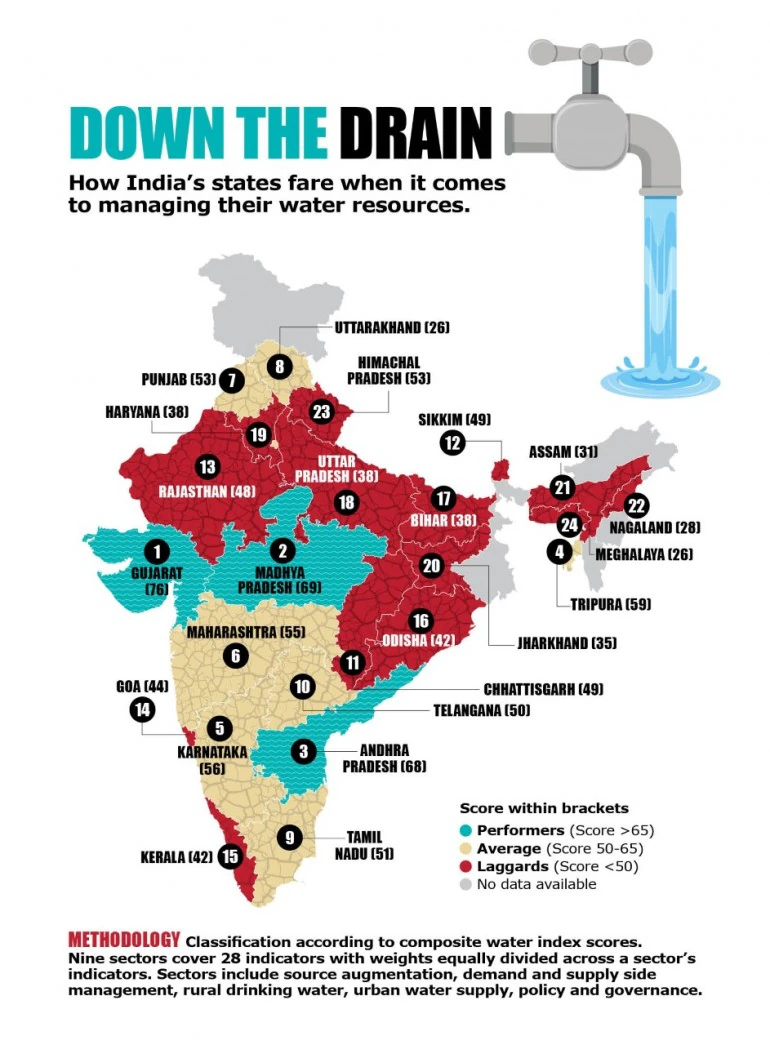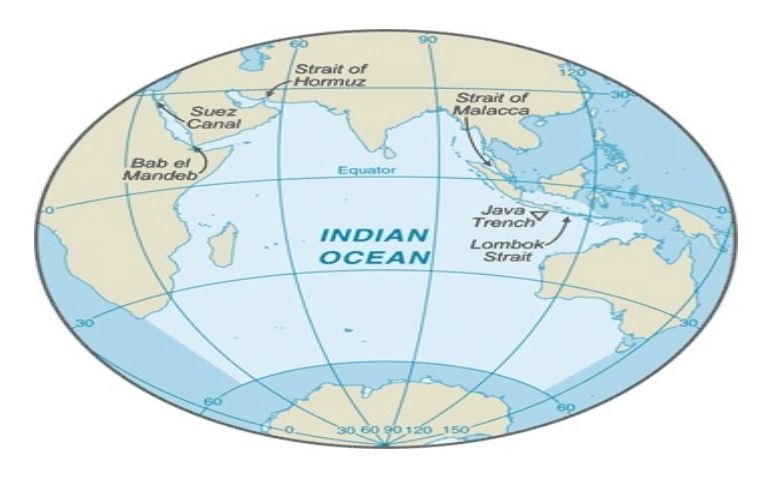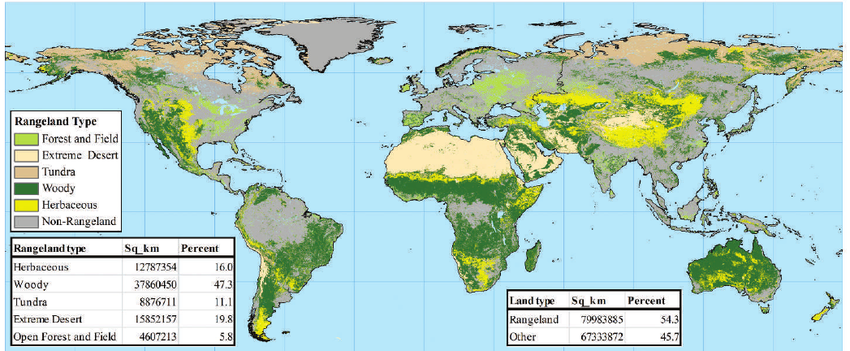10 Jul to 24 Jul, 2024
CLIMATE RESILIENT AGRICULTURE
Why in news : Recently, the Union government is planning to unveil a framework to promote climate-resilient agriculture in 50,000 villages located in climatically-vulnerable districts.
About :
What is Climate Resilient Agriculture ?
This involves integrating adaptation, mitigation, and other practices in agriculture to enhance the system's ability to respond to climate-related disturbances by resisting damage and recovering swiftly. It requires the prudent and improved management of natural resources such as land, water, soil, and genetic resources through the adoption of best practices.
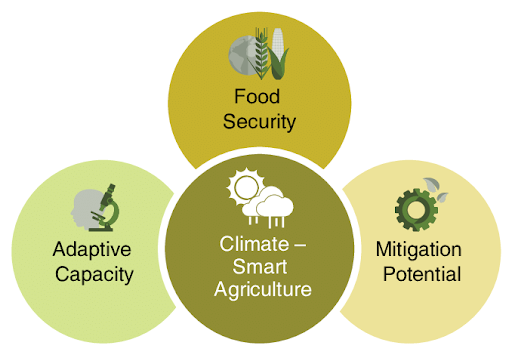
Major Impacts of Climate Change on Indian Agriculture
- Changes in Rainfall Patterns: In 2019, India experienced delayed and deficient monsoon rains, leading to reduced crop yields in many regions.
- Increased Temperature : In recent years, heatwaves in India have affected crop yields, particularly for heat-sensitive crops like wheat and rice.
- Shifting Pest and Disease Patterns : Increased incidence of pests like the pink bollworm has affected cotton production in India, and locust swarms from the Somalia region have increased due to erratic rain.
- Water Scarcity : Changes in precipitation patterns and melting glaciers can lead to water scarcity, especially during critical crop growth stages.
- Changes in Cropping Patterns : As temperature and rainfall patterns shift, farmers may need to adapt their cropping patterns to ensure productivity.
- Increased Extreme Weather Events : Climate change has been linked to an increase in extreme weather events, such as cyclones, storms, and hailstorms. For example, the recent Cyclone Biparjoy caused significant damage in affected areas.

Challenges in Adopting Climate Resilient Agriculture
- Multidimensional Intervention : Collaboration between teams with diverse backgrounds and methods is necessary due to the involvement of various stakeholders, leading to human resource and policy challenges.
- Skill Issues : There is a significant knowledge and training gap due to weak extension services, which limit the connection between research and farmers.
- Structural Issues : Agriculture faces structural challenges such as over-dependence on rainfall, inadequate seed supply, fragmented land holdings, and insufficient post-harvest infrastructure.
- Delayed Benefits : Certain agricultural practices take time to yield results, requiring sustained motivation and support for farmers.
- Policy Issues : Policies like Minimum Support Price (MSP) and subsidized fertilizers often lead to monocultures, excessive water extraction, soil health degradation, and the destruction of natural pollinators.
Strategies and technologies for climate change adaptation
- Gene Editing : Researchers have developed CRISPR-edited rice varieties that are resistant to bacterial blight, a significant disease impacting rice production in Asia.
- Tolerant Crops: Drought-tolerant maize varieties in sub-Saharan Africa, can produce 20-30% higher yields under drought conditions compared to conventional varieties.
- Water Management : In Israel, advanced drip irrigation systems have reduced water usage by up to 50% while increasing crop yields.
- Agro-Advisory : In India, the Indian Council of Agricultural Research (ICAR) offers agro-advisory services through mobile applications like mKisan, which sends real-time advisories to millions of farmers.
- Soil Organic Carbon : In Brazil, the adoption of no-till farming has improved soil organic carbon content and boosted soybean yields by up to 30%.
Role Models
- Andhra Pradesh, Himachal Pradesh, and Sikkim, among other states, have initiated extensive programs to adopt and promote organic farming practices. Notably, Sikkim has achieved the status of being an entirely organic state.
- The Indian Council of Agricultural Research (ICAR), in collaboration with its network of research institutes, state agricultural universities, and various departments, has been implementing agriculture contingency plans across approximately 650 districts in India to enhance climate change preparedness over the past seven years.
- These successful models are being extended to SAARC countries to help them adapt to climate change impacts such as floods, cyclones, droughts, heat waves, and seawater intrusion.
- Additionally, ICAR has established climate-resilient villages in 151 districts across India, which state governments are replicating to build carbon-positive villages and enhance overall resilience to climate change.
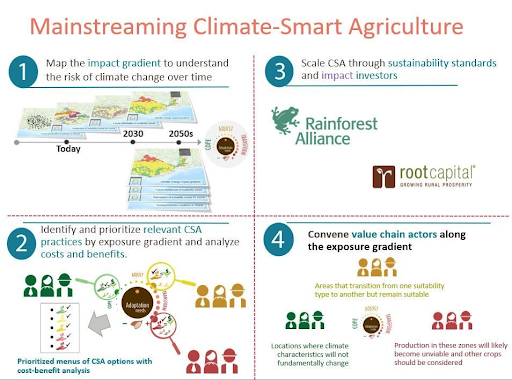
Government Efforts to Promote Climate Resilient Farming in India
|
Government Efforts |
Description |
|
National Mission of Sustainable Agriculture ( 2010 ) |
Promoting the judicious management of available resources. |
|
Pradhan Mantri Krishi Sinchayee Yojana (PMKSY) -2015 |
To promote micro/drip irrigation for water conservation. |
|
Paramparagat Krishi Vikas Yojana |
Climate-smart practices and technologies. |
|
Green India Mission ( 2014 ) |
To protect and restore forest covers, mitigating the effects of climate change. |
|
Soil Health Card scheme |
Analyze soil samples and provide guidance to farmers regarding land fertility status. |
|
Neem-Coated Urea |
Minimize excess use of urea fertilizers and protect soil health. |
|
National Project on Organic Farming and National Agroforestry Policy |
To promote organic farming practices and agroforestry for income and ecosystem benefits. |
|
Organic farming initiatives in Andhra Pradesh, Himachal Pradesh, Sikkim |
States adopting and promoting organic farming practices. |
|
ICAR climate-resilient villages |
Climate-resilient villages in 151 districts, aiming to build carbon-positive villages. |
|
Mahatma Gandhi National Rural Employment Guarantee Act (MGNREGA) -2005 |
To provide employment opportunities, economic security, and environmental protection. |
Way Forward :
- Adapt appropriate mitigation technologies like cultivating tolerant breeds to combat climate stress.
- Manage water and nutrients efficiently to enhance productivity and resource use.
- Provide timely agro-advisories for effective crop monitoring.
- Implement conservation agricultural practices to increase soil organic carbon and create a favorable environment for plant growth, including manure management.
- Prioritize the reduction of greenhouse gas emissions from both agricultural and non-agricultural sources, with neem-coated urea as a key policy intervention.
- Conduct structured training to build stakeholder confidence and raise awareness about climate change events.
- Bridge the gap between current management practices and essential agro-advisories. Develop flagship farmer-oriented programs to improve skills in agriculture and related sectors.
- Promote collaboration among farmers, research institutions, funding agencies, governments, NGOs, and the private sector to strengthen climate-resilient agriculture (CRA).
Source :
Where to use ?
Paper II( Geography Optional ) : Agriculture
Paper III ( General Studies ) : Agriculture and Environment Conservation
DECARBONISATION OF 7 MSME CLUSTERS
Why in news : Recently, a study on decarbonisation of 7 MSME clusters (Alathur, Asansol-Chirkunda, Bengaluru, Delhi-NCR, Coimbatore, Ludhiana and Tiruppur) has revealed that adopting renewable energy solutions and energy efficient measures could lead to significant annual savings and reduction in emissions of CO2.
About :
Decarbonisation of Alathur
Decarbonisation is the process of reducing carbon intensity, which involves lowering the amount of greenhouse gas emissions produced, particularly from the burning of fossil fuels. This process aims to transition energy systems and industrial processes to low-carbon or carbon-free alternatives, thereby mitigating the impact of climate change.
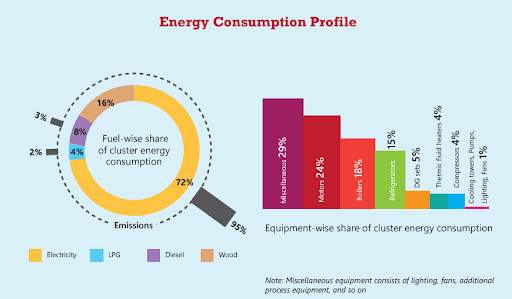

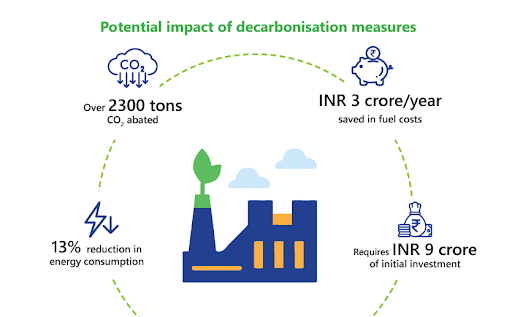
Challenges For Decarbonisation in India
- Fragmented Decision-Making : Lack of centralized decision-making hampers effective policy formulation and implementation, as seen in the slow progress of India's National Electric Mobility Mission Plan, which aims to promote electric vehicles.
- Lack of Clear Mandates : Clear mandates and roles need to be defined to ensure effective coordination and accountability, which would streamline efforts such as those seen in the National Solar Mission, aimed at scaling up solar energy capacity.
- Limited Expertise : Local regulatory bodies often lack the expertise to evaluate and implement advanced technologies like smart grids and carbon capture and storage. This expertise gap can hinder the adoption of innovative solutions that are critical for reducing carbon emissions.
- Inadequate Stakeholder Engagement : Implementation of large-scale renewable energy projects, such as wind farms or solar parks, has sometimes faced opposition from local communities due to inadequate consultation and consideration of their concerns. Involving stakeholders from the outset can help build consensus and ensure that decarbonisation initiatives are socially acceptable and sustainable.
Source :
Where to use :
Paper III ( General Studies ) : Conservation , Industries
FIRST LOCAL PLANT EXTINCTION IN THE US
Why in news : The Key Largo tree cactus (Pilosocereus millspaughii) has become the first recorded plant species in the United States to go extinct due to rising sea levels, highlighting the severe impact of climate change on biodiversity.
About :
- Discovered approximately thirty years ago in North America, the Key Largo tree cactus once flourished in the Florida Keys, an area highly vulnerable to sea-level rise and storm surges. This unique cactus was found in a single population in the Florida Keys, a region with low-lying land, much of which is less than five feet above sea level.
- Additionally, the species is present on a few scattered islands in the Caribbean, including northern Cuba and parts of the Bahamas.
- The habitat of the Key Largo tree cactus in the Florida Keys has faced increasing saltwater inundation due to rising sea levels, which rose by about 0.21 meters between 1971 and 2022, at an average annual rate of 4.09 millimeters.
- This saltwater intrusion, worsened by hurricanes and high tides, led to soil degradation, making the environment uninhabitable for the cactus.
Decline and Extinction of the Key Largo Tree Cactus
Timeline of Decline
- 1998: The cacti survived Hurricane Georges.
- 2005: The population was not significantly impacted by a series of four hurricanes.
- 2013-2015: A significant decline was observed, with the population reducing by 50%, leaving only 60 live individuals by 2015.
- 2016: Only 28 rooted stems remained, indicating a further 50% reduction.
- 2021: The team found only six ailing fragments, which were rescued for off-site cultivation.
- 2022-2023: No healthy material was found in 2022, but a small, rooted fragment regrew to approximately 35 cm in 2023 and was rescued.
Factors Contributing to Extinction
- Worsening storm surges and increased sea levels were likely responsible for the dramatic decline post-2015.
- Herbivory also played a role, as animals dealing with water scarcity targeted the cacti, which store water in their stems.
Ecological and Environmental Implications
- Impact on Local Biodiversity : The extinction of the Key Largo tree cactus serves as a warning for other low-lying coastal plants. The Florida Keys have experienced 19 named hurricanes since 2000 and an increase in “king tides,” which are unusually high tides causing prolonged flooding.
- This has led to saltwater encroachment and habitat loss, threatening other plant and animal species in the region.
- Broader Implications of Rising Sea Levels: According to NASA, global sea levels have risen by 103 millimeters since 1993 due to melting ice sheets and the thermal expansion of seawater.
- A 2013 report by the Center for Biological Diversity found that 17% of the nation’s threatened and endangered species are at risk from rising sea levels. These species include the Key deer, Loggerhead Sea turtle, Delmarva Peninsula fox squirrel, Western snowy plover, and Hawaiian monk seal.

Source :
Paper III ( General studies ) : Global Warming and Sea Level Rise
Supernovae
Supernovae : A supernova is a powerful and luminous explosion of a star. This event occurs during the last evolutionary stages of a massive star or when a white dwarf in a binary system accretes enough matter to reach a critical mass, leading to a catastrophic release of energy.
Decarbonisation
Decarbonisation : Decarbonisation refers to the process of reducing carbon dioxide (CO₂) emissions resulting from human activities, particularly the burning of fossil fuels. The primary goal of decarbonisation is to mitigate the impact of climate change by transitioning to a low-carbon or zero-carbon economy. This involves a wide range of strategies and actions aimed at reducing greenhouse gas emissions across various sectors, including energy, transportation, industry, and agriculture.
Groynes
Groynes : Groynes are structures built perpendicular to the shoreline, extending from the beach into the water. They are commonly constructed from materials like wood, concrete, or stone. The primary purpose of groynes is to interrupt water flow and limit the movement of sediment, effectively controlling beach erosion and encouraging sand accumulation on the updrift side.
Land Degradation Neutrality
Land Degradation Neutrality : Land Degradation Neutrality (LDN) is a concept and global commitment aimed at halting and reversing land degradation by ensuring that the amount of healthy and productive land remains stable or increases over time. The United Nations Convention to Combat Desertification (UNCCD) introduced LDN as a key target within the Sustainable Development Goals (SDGs), specifically SDG 15, which focuses on life on land.
Biochar
Biochar : Biochar is a form of charcoal produced by heating organic materials (such as agricultural waste, wood chips, or manure) in a controlled environment with limited oxygen, a process known as pyrolysis. This process converts the organic materials into a stable form of carbon that can be used for various environmental and agricultural benefits.
SPONGE CITY, SHENZHEN IN CHINA
Shenzhen is a prime example of China’s Sponge City Program, which aims to both prevent flooding and increase water supply in urban areas. Shenzhen was one of the first cities to be selected for the national Sponge City pilot program, starting in 2016. The initial phase focused on 30 square kilometers of urban area.
Investment and Funding: The project received substantial funding from both central and local governments. By 2018, Shenzhen had invested over 20 billion yuan (approximately USD 3 billion) in Sponge City initiatives. According to the Shenzhen Water Authority, the implementation of Sponge City measures has reduced the frequency and severity of urban flooding by 50% in the pilot areas.
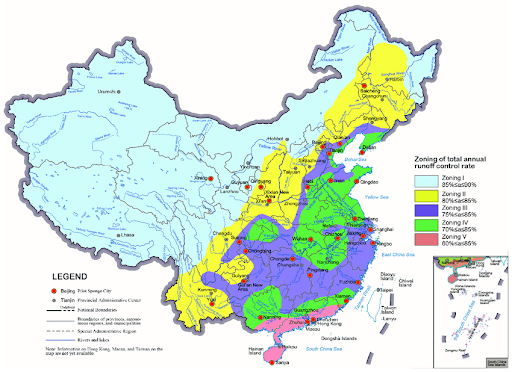
Source :
Where in news :
Paper II ( Geography optional ) : Sustainable Development of cities and Towns
Paper I ( General Studies ) : Floods and Urban areas
Places in the news
1. Hathras
Why in news : Recently, India witnessed another tragic stampede that claimed over 100 lives in Uttar Pradesh's Hathras district.
- Hathras is a district headquarter with four subdivisions — Hathras, Sasni, Sikandra Rao, and Sadabad.
- Hathras is the only city in the area to have five railway stations named after it.
- Hathras falls under the Braj region of Northern India and is famous for its industrial, literary, and cultural activities as a part of Aligarh.
- Approx: Aligarh
2. Prakasam
Why in news : Recently, archaeologists have discovered a 41,000-year-old ostrich nest in Prakasam, Andhra Pradesh.
- Prakasam district is one of the twelve districts in the coastal Andhra region of the Indian state of Andhra Pradesh.
- The headquarters of the district is Ongole. It is located on the western shore of Bay of Bengal and is bounded by Bapatla district and Palnadu districts in the north, Nandyal district in the west, Kadapa and Nellore districts in the south.
- Approx : Kurnool
3. Chandrabhaga
Why in news : Chandrabhaga lighthouse, located near Konark temple, is all set to endure severe cyclone.
- Chandrabhaga Beach is situated three km east of the Sun temple of Konark, in the Puri district in the state of Odisha, India.
- Chandrabhaga beach on the coast of Konark becoming India's first to get the Blue Flag certification.
- Approx : Puri
4. Tizu river
Why in news: The Union Minister of Ports, Shipping & Waterways (MoPSW), along with the Chief Minister of Nagaland announced development of Tizu Zunki (National Waterways 101)
- The Tizu River forms an important drainage system in the eastern part of Nagaland.
- It originates from the central part of Nagaland state and runs through a northeast direction, flows through Kiphire and Phek districts and confluences in the Chindwin River of Myanmar.
- The Chindwin River further enters into Irrawaddy River, the largest river of Myanmar.
5. Puri
Why in news : Recently, the Forest Advisory Committee (FAC) of the Ministry of Environment Forest and Climate Change reprimanded the Odisha government for building walls, without approval, in forest land that will be part of the proposed Shree Jagannath International Airport in Puri.
- Puri district is a coastal district of the Odisha state of India.
- District is famous for the world over for Handicraft and Cottage industries, its original source being the temple craft of Lord Jagannath and the Sun Temple at Konark.
- The rivers of Puri district are generally tributaries of the Mahanadi river
- Approx : Bhubaneshwar
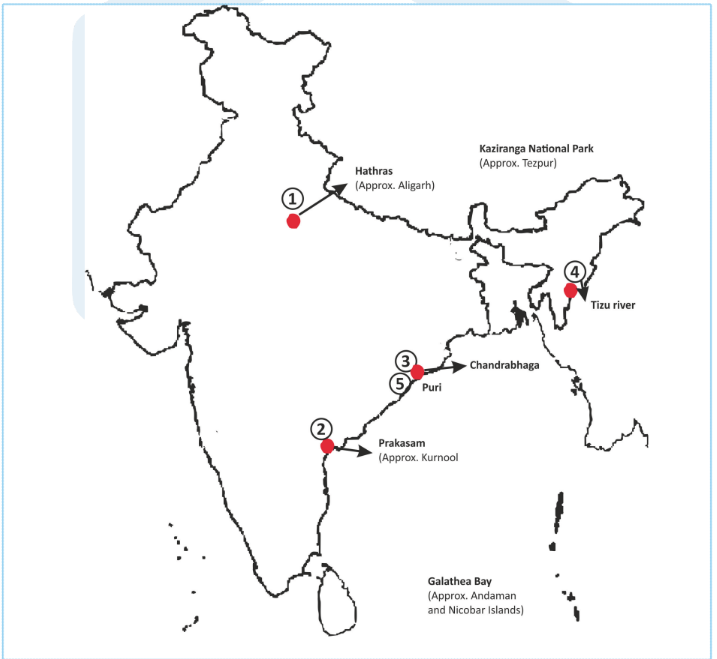
Fortnightly KOSMOS MCQs Practice
Q1. Consider the following statements about the Net-Zero Target:
- It pertains to achieving an equilibrium between the carbon emissions generated and the carbon removed from the atmosphere.
- According to the Paris Agreement, to limit global warming to a maximum of 1.5°C, emissions must be reduced by 45% by 2030 and achieve net zero by 2050.
Which of the statements given above is/are correct?
- Only 1
- Only 2
- Both
- None
Q2. Consider the following statements regarding Indian Eagle-Owl:
- It is a large species of horned owl native to the hilly and rocky scrub forests of the Indian Subcontinent.
- Earlier , it was considered a subspecies of the Eurasian eagle-owl.
Which of the above statements is/are not correct?
- Only 1
- Only 2
- Both
- None
Q3. Consider the following statements about the Fungi:
- They are prokaryotic cells without membrane-bound organelles or clearly defined nuclei.
- These organisms are present in all temperate and tropical regions where there is enough moisture for their growth.
- Fungi, on the other hand, inhabit both terrestrial and aquatic environments.
How many of the above statements are correct?
- One Statement
- Two Statements
- Three Statements
- None Statement
Q4. Consider the following statements regarding the Biodiversity Beyond National Jurisdiction (BBNJ) Agreement:
- It is an international, non-legally binding agreement under the United Nations Convention on the Law of the Sea (UNCLOS).
- This treaty addresses increasing concerns regarding the long-term protection of marine biodiversity in the high seas.
- Its goal is to achieve Sustainable Development Goal 6, which focuses on Life Below Water.
How many of the statements given above is/are correct?
- Only one
- Only two
- All three
- None
Q5. Consider the following statements:
- The United Nations Convention to Combat Desertification (UNCED) is one of the three Rio Conventions adopted at the Earth Summit in 1992.
- Sustainable Development Goal 9 emphasizes the protection, restoration, and sustainable management of terrestrial ecosystems.
- India has set a target to restore 126 million hectares of degraded land by 2030.
How many of the statements given above is/are correct?
- Only One
- Only two
- All three
- None
Q6. Consider the following statements regarding National Tiger Conservation Authority (NTCA):
- It is a statutory body established under the provisions of the Wildlife (Protection) Act, 1972.
- It was created in 1976 , based on the recommendations of the Tiger Task Force.
Select the correct answer using the code given below:
- Only 1
- Only 2
- Both
- None
Q7. Consider the following statements regarding the Green Funds.
- Green funds are mutual funds or other investment vehicles that support socially and environmentally conscious policies and business practices.
- Their goal is to achieve competitive returns while addressing climate change and promoting sustainable development.
- The Green Climate Fund was established by the World Bank in 2010.
Which of the statements given above is/are correct?
- 1 and 2 only
- 2 and 3 only
- 1 and 3 only
- All of the above
Q8. Consider the following statements regarding glacial and interglacial periods:
- Glacial periods are marked by colder, dustier, and generally drier conditions compared to interglacial periods.
- The advances and retreats of glaciers, sediment deposits, and tree rings offer insights into wet and dry periods.
- A decrease in sunspots is associated with cooler, wetter weather and increased storminess.
Which of the statements given above is/are correct?
- 1 and 2 only
- 1 only
- 1 and 3 only
- 2 and 3 only
Q9. Consider the following statements regarding the Zoological Survey of India (ZSI):
- It was established under the Wildlife Protection Act of 1972.
- Its headquarters are located in Dehradun
- It operates under the Union Ministry of Environment, Forest and Climate Change.
Which of the statements given above is/are correct?
- 1 and 2 only
- 1 only
- 3 only
- 1, 2 and 3
Q10. Consider the following statements related to Forest Advisory Committee (FAC):
- It is a statutory body established under the Indian Forest Act of 1927.
- Its role is to evaluate industrial projects that require forest land.
Which of the above statements is/are correct?
- Only 1
- Only 2
- Both
- None
Share the article
Edukemy’s Current Affairs Quiz is published with multiple choice questions for UPSC exams
MCQ
Get Latest Updates on Offers, Event dates, and free Mentorship sessions.

Get in touch with our Expert Academic Counsellors 👋
FAQs
Geography Current Affairs focuses on the contemporary issues, events, and developments in the field of geography. It covers recent geographical phenomena, environmental changes, geopolitical shifts, and related news. This differs from regular geography studies which may focus more on foundational concepts, historical contexts, and theoretical frameworks.
Updates are provided regularly to ensure that subscribers stay informed about the latest developments in geography. Typically, updates are provided on a fortnightly basis, depending on the frequency of significant events and changes in the field.
Absolutely. Geography Current Affairs serves as a valuable resource not only for Geography optional but also for GS papers, especially GS Paper 1 (covering Indian Heritage and Culture, History, and Geography of the World and Society) and GS Paper 3 (covering Technology, Economic Development, Biodiversity, Environment, Security, and Disaster Management). It aids in building a holistic understanding of various topics and strengthens answer-writing skills by incorporating contemporary examples and perspectives.
Geography Current Affairs holds immense importance for UPSC preparation, particularly for aspirants opting for Geography optional. It helps candidates stay updated with the latest developments, geographical phenomena, environmental issues, and geopolitical shifts worldwide, aligning them with the dynamic nature of the subject as tested in the UPSC examinations.

